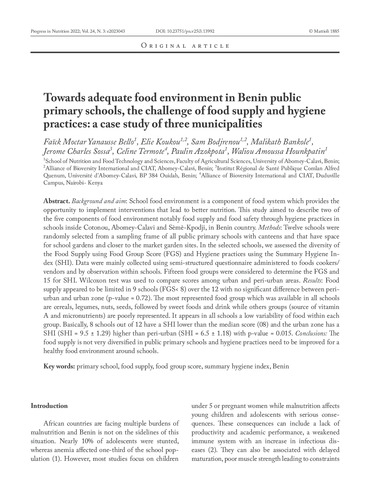Towards adequate food environment in Benin public primary schools, the challenge of food supply and hygiene practices: a case study of three municipalities
Background and aim: School food environment is a component of food system which provides the opportunity to implement interventions that lead to better nutrition. This study aimed to describe two of the five components of food environment notably food supply and food safety through hygiene practices in schools inside Cotonou, Abomey-Calavi and Sèmè-Kpodji, in Benin country. Methods: Twelve schools were randomly selected from a sampling frame of all public primary schools with canteens and that have space for school gardens and closer to the market garden sites. In the selected schools, we assessed the diversity of the Food Supply using Food Group Score (FGS) and Hygiene practices using the Summary Hygiene Index (SHI). Data were mainly collected using semi-structured questionnaire administered to foods cookers/ vendors and by observation within schools. Fifteen food groups were considered to determine the FGS and 15 for SHI. Wilcoxon test was used to compare scores among urban and peri-urban areas. Results: Food supply appeared to be limited in 9 schools (FGS< 8) over the 12 with no significant difference between periurban
and urban zone (p-value = 0.72). The most represented food group which was available in all schools are cereals, legumes, nuts, seeds, followed by sweet foods and drink while others groups (source of vitamin A and micronutrients) are poorly represented. It appears in all schools a low variability of food within each group. Basically, 8 schools out of 12 have a SHI lower than the median score (08) and the urban zone has a SHI (SHI = 9.5 ± 1.29) higher than peri-urban (SHI = 6.5 ± 1.18) with p-value = 0.015. Conclusions: The food supply is not very diversified in public primary schools and hygiene practices need to be improved for a healthy food environment around schools.

